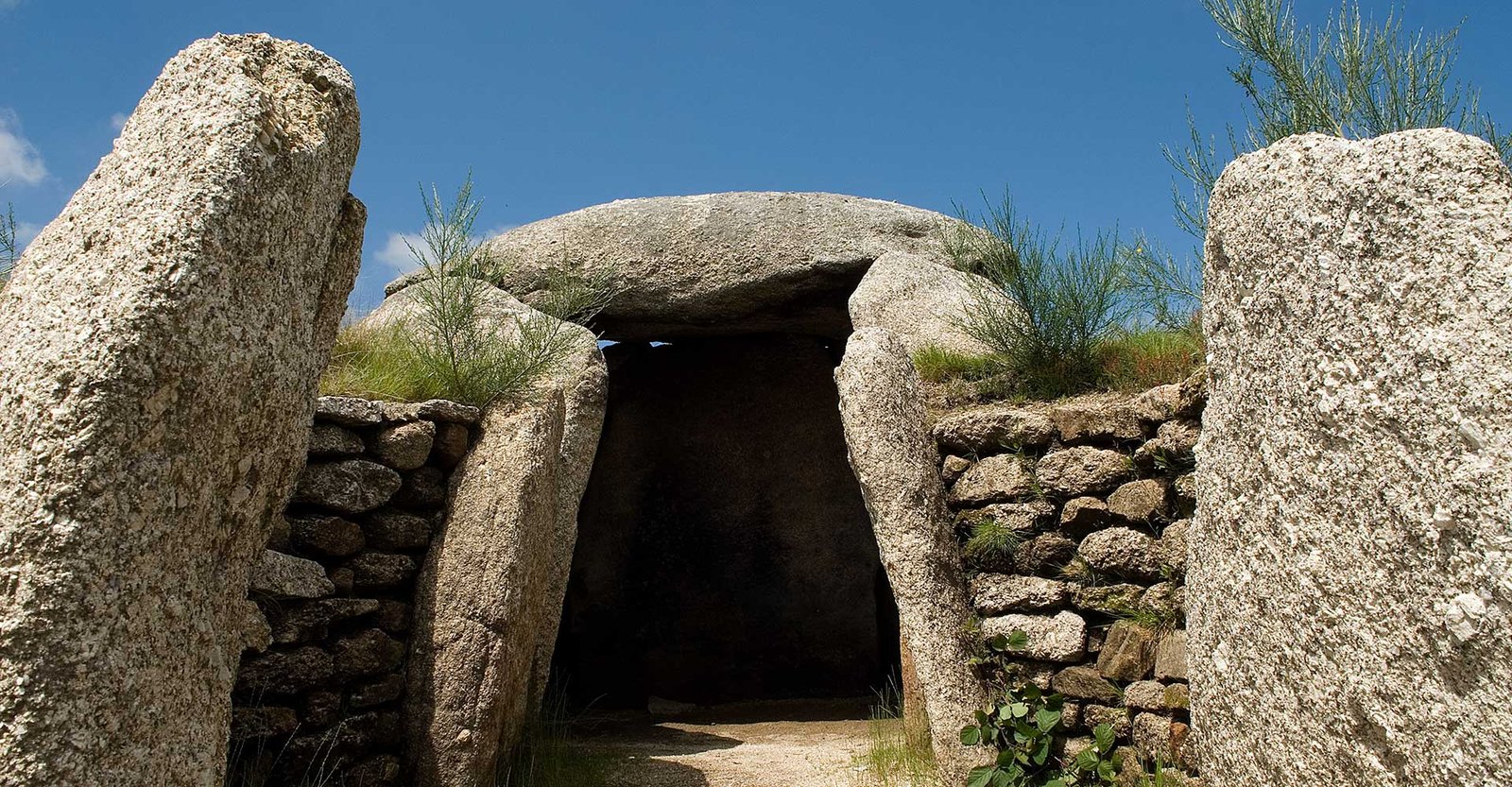12th century - 19th century Although the date of its foundation is unknown, it is known that in 1120 this monastery belonged to the Diocese of Porto, being connected to the Canons Regrantes of St. Augustine. In 1141, D. Afonso Henriques sold the Charter de Couto to the abbot of the Monastery for 150 morabitinos. In 1560, it is attached [...]
Outeiro de Gregos 3
Outeiro de Gregos 3
The monument is located in the center of a large hill, on a granite outcrop, standing out in the landscape. The mamoa contains an enclosed dolmen, with a small funerary chamber. The stone casing of the mamoa (lithic shell) was maintained, being replaced by another in the excavated areas, in order to preserve the monument. Period: 1st met. of […]
Outeiro de Gregos 2
Outeiro de Gregos 2
The monument is located in the center of a large hill, on a granite outcrop, standing out in the landscape. Dolmen closed but with a small "window" type opening to the east. It was decided to maintain the lithic shell that covered the mamoa, building in the excavated areas, in its replacement, a similar structure, with a view to the conservation of the monument. [...]
Outeiro de Ante 3
Outeiro de Ante 3
The first monument excavated in the Serra da Aboboreira, in 1978, within the scope of the Archaeological Field. Medium sized dolmen, with a small entrance to the east, marked by a threshold. It only conserves four of its seven original supports, identified in the excavations by their settlement alveoli. In addition to a possible fragment of cover, which is [...]
OUTEIRO DE ANTE 1
OUTEIRO DE ANTE 1
Large monument, built on a natural elevation, standing out strongly in the landscape. It is an open dolmen, without corridor, with an elongated polygonal shape, and composed of seven supports. Unfortunately, some of these supports were broken to be used in the construction of the Tapado that is immediately to the west. Period: 1st half of the IV millennium BC (?)
Meninas de Castro 3
Meninas de Castro 3
Half-sized dolmen, probably closed, and amputated by the road, as well as the mamoa that covered it to the east. The slab found on the roof was found about 30m northeast of the monument, serving as a landmark of county division. Its configuration led to suppose that it could have served [...]
CHÃ DE PARADA I
CHÃ DE PARADA I
Large dolmen, made up of nine stanchions, with an access corridor that distinguishes itself from the funeral chamber in plan and elevation, and which originally was composed of three stalks on each side. In its interior are still visible engravings, that we must conserve. The deck of the dolmen is broken, missing [...]
Castelo de Matos
Castelo de Matos
The occupation of the region continues throughout the medieval period, standing out the hill of the Castle of Matos. Strong brand in the landscape and the identity of Baião because it was the place chosen by the lord of this territory for the construction of the castle that in the middle of the century. XI commanded the destinies of the Land of Bayam. It was [...]
Roman Occupation
Roman Occupation
During the roman occupation, the people preferred living near the slopes and valleys of the main water courses, evidently making the Douro and Ovil river the more sought-after locations of the territory. Remains of roman tracks and hillforts were found throughout those typographically relevant places.
BURIAL MOUNDS
BURIAL MOUNDS
Among this territory’s first remains of human occupation, the quantity, diversity and visibility of burial mounds stands out, as they are regarded as a landmark of the Aboboreira mountains. The Aboboreira and its scenic landscape is enriched by the quantity, diversity and visibility of its burial mounds, as they prevail as the most noteworthy remains from human occupation in the territory.









